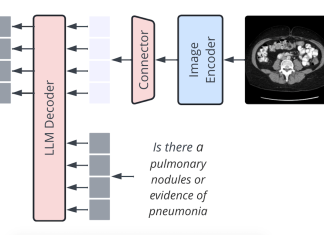Understanding GenSQL: The Enhancement of SQL to Transform Healthcare and Virtual...
In today's world, efficiently managing and analyzing vast amounts of data is crucial for various industries. GenSQL, a pioneering system developed by researchers at...
The Protein Interaction Explorer (PIE) Platform: Revolutionizing the Study of Protein-Protein...
A web-based tool called Protein Interaction Explorer (PIE) by researchers from Université de Paris, France, was created to support structure-based drug discovery efforts that center...
The Future of Drug Design: How Machine Learning is Revolutionizing PROTAC...
As the fight against disease has changed, so have therapeutic strategies. One such new approach is Targeted Protein Degradation (TPD), which attempts to exploit...
Decoding RNA-Protein Interactions: Harnessing Computational Tools for Advanced Predictions without High-Throughput...
The Central Dogma of Biology describes the process of DNA (Deoxyribonucleic acid) undergoing transcription to form RNA (Ribonucleic acid) and transformation to form proteins...
ZeroDDI: Revolutionizing Drug-Drug Interaction Event Prediction with Zero-Shot Learning
In the context of the field of medical practice, identifying potential DDIs (Drug-drug interactions) is critical in assessing the safety of a patient’s prescribed...
GeneRAG: Taking LLMs a Step Forward with Retrieval-Augmented Generation in Genetic...
Large Language Models (LLMs) have greatly revolutionized text generation and comprehension in the world of Natural Language Processing. Nowadays, they can be used for...
MicroWorldOmics – A One-Stop Pipeline for Microbiome and Virome Analysis
Dr. Runze Li and his colleagues from different institutes in China have recently developed high-tech tools that help researchers navigate through the complexities of...
Supercomputing Simplified with AI: The APACE Approach to Accelerated Discovery in...
Researchers from the University of Illinois Urbana-Champaign introduce APACE, AlphaFold2, and advanced computing as a service, a computational framework that manages this TB-sized AI...
Dante’s GenomeChat: Your Gateway to Personalized Genomic Insights
Dante Genomics launched Dante GenomeChat, which enables users to receive highly personalized genomic information thanks to advanced technology. A graphical iOS app can access...
BulkRNABert: A New Weapon in the Fight Against Cancer – How...
Recent pioneering research by Université Paris-Saclay and Instadeep scientists has introduced a new technique, BulkRNABert. This method exploits a language model, an artificial intelligence...
From Complex to Clicks: BiomiX, an Automated Ally for Life Scientists...
A team of researchers from France and Spain designed BiomiX, a user-friendly bioinformatics tool for multiomics data analysis. BiomiX addresses the challenge of multiomics...
Accelerating the Path to New Medicines: Monash’s Innovative AI Tool for...
Improved identification of interactions between proteins and ligands has been invaluable in the progress of computational biology, potentially enhancing drug discovery and revealing more...
Modeling the Perfect Diagnosis with Machine Learning in Ovarian Cancer
Genes are the basic units of heredity, but they only come to life when translated into proteins. The study of the proteins found in...
AI and Biomedicine: Enhancing Diagnosis with Vision-Language Models
Vision language modeling has been transformed by transformational AI technology called multimodal learning. Technological developments such as multimodal GPT-4V and LLaVA-Med allow for powerful...
AI Tools for Cancer Researchers: Enhancing Productivity and Uncovering New Discoveries
Artificial intelligence (AI) has become widely accessible, transforming from a specialized resource into a common tool for cancer researchers. It is beneficial for every...
Geneverse: A Powerful Open-Source Toolkit for Genomic and Proteomic Research
Scientists from Yale University, UCLA, and UT Health have introduced Geneverse, a collection of fine-tuned LLMs and multimodal LLMs (MLLMs) for genomic and proteomic...
MolecularGPT: Revolutionizing Molecular Property Prediction with Open LLMs
Drug discovery requires the fundamental process of molecular property prediction or MPP. However, the shortcomings of previous approaches—crucial for real-world applications—are their limited capacity...
Simulating Evolution with EvolutionaryScale’s ESM3: A Leap Forward in Artificial Intelligence...
Researchers at EvolutionaryScale introduced ESM3, an AI-driven language model for the life sciences that enables us to create and program using the universal language...
The Future of Therapeutics: Google’s Tx-LLM and Its Generalist Approach to...
The field of medicine has had big news. Scientists from Google Research and Google DeepMind unveil Tx-LLM, a new tool that helps speed up...
RNAfold: Leveraging Variational Autoencoders for Accurate RNA Tertiary Structure Prediction
In drug development, the accurate prediction of RNA structures plays a pivotal role. Leveraging the power of machine learning, particularly Variational Autoencoders (VAEs), has...
FoldToken2: Decoding Proteins with a New Compact Language
Scientists at Westlake University have developed FoldToken2, a novel approach to protein structure representation that is capable of surpassing the coordinates. This innovative method...
Unlocking New Dimensions in AI-Driven Drug Discovery: TopoFormer Merges Topology and...
Transformers have shown promise in computational biology, but applying them to biological sequences could cause mispredictions in the downstream processes. A greater range of...
Can Computationally Designed Membrane Protein Analogs Accelerate Drug Discovery?
It is still very difficult to construct complex protein folds from scratch using only computational methods. École Polytechnique Fédérale de Lausanne (EPFL) scientists create...
Breaking Barriers in DNA Research: CGeNArate – A Simplified Model for...
Researchers from the Institute for Research in Biomedicine (IRB Barcelona) introduce CGeNArate, a short sequence-dependent coarse-grained model for DNA simulations. CGeNArate solves the challenge...
Streamlining Drug Discovery: How SPARROW Picks the Most Promising Molecules
In the world of molecular design that is constantly evolving, it is always essential to ensure that along with the structure and properties of...
Bioimage Analysis Just Got Easier: Unveiling the Power of Omega, the...
Omega is an open-source software tool that greatly enhances the field of bioimage analysis. Developed by Loïc A. Roy from Chan Zuckerberg Biohub San...
Binding Site-driven Molecule Design: BindGPT’s Language Modeling and Reinforcement Learning Powered...
Understanding the intricate physical interactions between a molecule and its surroundings is necessary to generate unique active molecules for a particular protein, which is...
Can Diffusion Models Crack the Protein Structure and Docking Code?
The field of protein modeling has witnessed remarkable advances in recent years, particularly with the advent of machine learning techniques. A new review by...
Introducing the Personal Health LLM: A New Era of Data-Driven Wellness...
In the field of health, LLM endeavors to concentrate on clinical duties and obtain a diverse array of data. The promise of LLMs in...
Indexing Nature’s Code: A ‘Google for DNA’ to Catalog All Known...
Suppose there was a library where the whole instruction manual for every living organism on Earth could be found. It's not science fiction, but...
Proteome-wide PPI Screening: AlphaFastPPi Paves the Way for Large-scale Studies
Despite the challenge of scaling for large-scale screenings, advances in computational structural biology, like AlphaFold-Multimer, have greatly improved the understanding of protein-protein interactions across...
BioNeMo Folds the Human Proteome: A Fused Dataset of 3D Protein...
In a recent scientific breakthrough, a team of researchers from NVIDIA and Innophore, USA, came up with a holistic dataset of the predicted protein...
Machine Learning Unveils a Million Potential Antimicrobial Peptides in the Global...
Antibiotic resistance must be addressed immediately with novel antibiotics. By using a large dataset of 63,410 metagenomes and 87,920 prokaryotic genomes from environmental and...
Advancing Pharmaceutical and Industrial Protein Engineering with StructureGPT’s Innovative Structure-to-Sequence Translation...
Sequence-to-structure predictions are the main focus of current computational methods for reverse translation, which is the process of translating complicated protein structures into sequences....
The AI Behind the Breakthroughs: Meta Llama 3 NIM and the...
The healthcare industry is about to change significantly due to the advent of generative AI. Meta Llama 3 NIM, a mighty NVIDIA-developed AI microservice,...
Charting the Protein Universe with ProTrek’s Tri-Modal Contrastive Learning
Bioinformatics, in its continuous advancement, depends on the detailed examination of proteins within its molecular domain. Proteins, the working structures of the cell, have...
Leveraging AlphaFold, Rosetta, and Replica-Exchange for Reliable Protein-Protein Docking with AlphaRED
Significant progress has recently been made in predicting protein sequence to structure; however, modeling protein interfaces and complex structures is still tricky, particularly when...
Protein Shapes in Motion: How Diffold Revolutionizes Conformation Sampling
Our cells are supported critically by proteins, which are also highly affected by their 3D structure. The triumph in computational biology is the ability...
MultiRNAflow: A Comprehensive Tool for Temporal RNA-seq Data Analysis in Multiple...
RNA sequencing is currently a useful tool for studying the dynamic transcriptional mechanisms that control the operation of eukaryotic cells. Nevertheless, complicated experimental designs...
Predicting Multiple Conformations and Ensembles with AFsample2: An AlphaFold2 Extension
Acting as enzymes, structural elements, and molecular motors, proteins represent the molecular drive of biological systems, the elucidation of which relies on the explication...
Simplifying Single-cell Metadata Exploration with LotOfCells
Single-cell RNA sequencing (scRNA-seq) has brought a revolution in biological research by granting scientists a look into the mechanisms inside individual cells within a...
Outsmarting the Malaria Parasite: SMART Researchers Decode the Mystery of Drug...
Artemisinin, which is used as a cure for malaria, has remained an effective drug in managing the disease over the years. However, the recent...
No Coding Required! SaprotHub Brings Protein Modeling to Every Biologist
Users without prior Machine Learning (ML) experience have difficulties when it comes to training and implementing deep learning models. Regardless of prior experience with...
Breaking New Ground in RNA Structure and Sequence Design with RNAFlow
Unsung heroes of our cells are RNAs. These molecules are responsible for many biological processes, from carrying hereditary material to controlling protein production. However,...
Oxford Researchers Develop Game-changing Small Molecule to Suppress the Evolution of...
Antibiotic resistance is one of the most pressing challenges in modern medicine. As bacteria evolve to withstand our best treatments, once-manageable infections are becoming...
Scaling Protein Design and Scaffolding to the Structural Universe with Genie...
Genie is a promising method for designing proteins that use expressive SE(3)-equivariant attention and simple Gaussian noise to represent structures asymmetrically during forward and...
GeneFormer: A Transformer-based Approach for Efficient Gene Data Compression
In a recent study, scientists from Tsinghua University, China, introduced GeneFormer, a unique system for compressing gene sequences. The technique uses transformers to make...
Predicting Ligand-specific Protein-ligand Complex Structure with DynamicBind: A Novel Deep Equivariant...
In the ever-changing environment of computational biology, predicting the structure of protein-ligand complexes remains a vital task with far-reaching ramifications for drug development and...
The Promise and Reality of AI-discovered Drugs: A Look at Early...
Drug discovery is a process known for being slow and expensive. A great number of optimistic molecules disappear in clinical trials while patients wait...
Protein Design Reimagined: ProtMamba’s Alignment-Free, Homology-Aware Modeling
Personalized medicine and effective sequence utilization are made possible by protein design, even in cases when numerous sequence alignments are not well constructed. This...























































